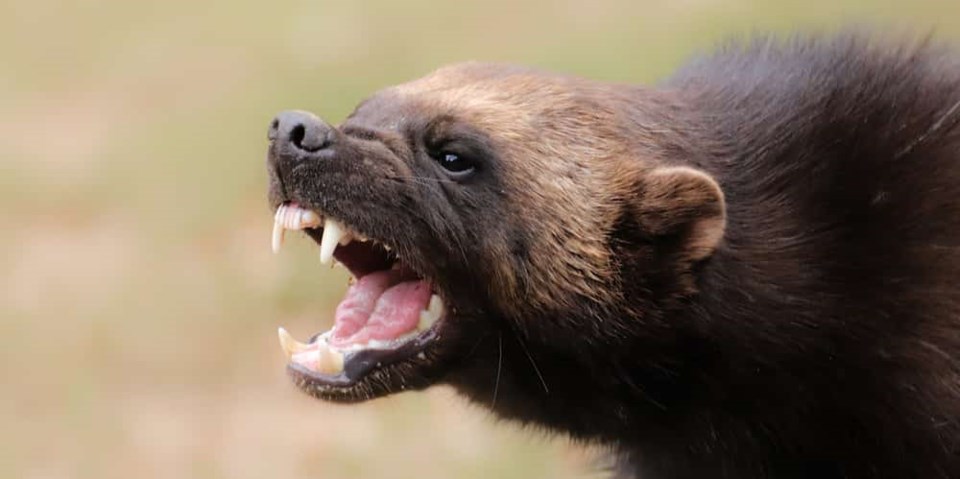They hiss, growl, and scream, and their razor-sharp teeth are strong enough to chew through bone. As such, it comes as little surprise why Marvel Comics decided to name one of their most iconic characters after them.
Native to North America, the wolverine is the largest land-dwelling member of the 'mustelid,' or weasel family, which includes everything from badgers to otters to minks. And while they weigh less than 50 pounds, these adept predators are known to prey upon animals more than double their size.
Given their stocky, broad bodies, wolverines somewhat resemble small chocolate-and-tan coloured bears with bushy tails. Males are generally larger than females, and they have small, wide-set eyes. Their diet consists of everything from elk to moose to berries - but they'll eat almost anything they find. Their scientific name - Gulo gulo - comes from the latin word gulo, which means glutton. Wolverine young are called kits, and a brood usually consists of one to five of them.
Ferocious and cunning, the wolverine is a solitary animal known for its impressive strength and tenacity. However, it scavenges a great deal of its diet, which is how it comes into contact with a number of larger predators. By feasting on the kills of wolves and bears, wolverines put themselves at risk of attack. And while they are known to put up a good fight, they often fall prey to bigger contenders.
Known as the 'hyena of the north,' wildlife biologist R.D. Weir writes for the Ministry of Environment that the opportunistic mammals have the, "ability to detect animal remains buried under several feet of snow and are also reported to cache food that they have scavenged and revisit these sites later in the year." In fact, he notes that they may obtain up to 60 per cent of their diet from carrion.
Getting tired of the cold? Well how about this lovely fella who is all smiles for this #ToothyTuesday? pic.twitter.com/MLhuhcLn1P
— Alberta Wolverine (@AltaWolverine) January 21, 2020
Besides being known as snowy scavengers, wolverines are also called 'skunk bears' due to a pungent odour that the animals emit to mark their territories; they're also able to use the scent when they feel threatened,
Wolverines are widely distributed throughout much of British Columbia, but in low densities. According to Wolverine Watch, they are listed as endangered in the United States and are of Special Concern in BC and under the Canadian Species at Risk Act. The carnivore needs huge spaces to thrive and, "Climate change is melting away the deep spring snow pack wolverines rely on for survival." In addition, the animals are hunted for their fur, which is often used as hood trim on parkas or other garments.
If you spot a wolverine while on a hike or holiday, please report the sighting here.



